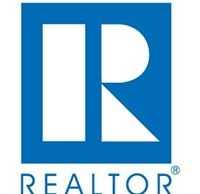WASHINGTON (May 17, 2018) – (RealEstateRama) — Appraisals are a vital part of the real estate transaction and have traditionally been done in-person by an experienced appraiser, but efforts to reduce costs, increase efficiencies and incorporate more innovation, technology and data in the valuation process are expanding the use of alternative valuation methods.
That’s according to speakers at a real property valuation forum yesterday during the 2018 REALTORS® Legislative Meetings & Trade Expo.
Traditional appraisal alternatives, like hybrid appraisals, broker price opinions and data-driven automated or desktop valuation models, can be incredibly useful and cost-effective tools. But many in the industry, including the National Association of Realtors®, urge caution when waiving traditional, onsite appraisals for home purchase transactions to ensure purchases are based on sound financial principles and do not put undue risk on consumers or the market.
Ernie Durbin, chief valuation officer at Clarocity Corporation, a provider of residential real estate valuations services, said alternative or hybrid appraisal reports is a misnomer. “Alternative or hybrid appraisal reports are simply reports with a different scope of work than a traditional report,” he said. The Scope of Work rule from the Uniform Standards of Professional Appraisal Practice, or USPAP, was introduced in 2006 and gives appraisers the ability to tailor each assignment appropriately for the client and circumstances.
He said the scope of work for a non-traditional property valuation could include a desktop valuation that relies on third-party inspections and utilizes extraordinary assumptions, a sales comparison approach or a qualitative analysis that doesn’t make adjustments to comparables.
Durbin also touched on compliance and said for appraisal alternative reports to comply with minimum appraisal standards they must conform to generally accepted USPAP standards, be written and contain sufficient information and be performed by state certified or licensed appraisers. He also said appraisers bear the responsibility of compliance, and when using alternate valuation products, they must determine if the scope of work is enough to provide credible results and ensure they are in control of the appraisal process and not limited by the form or format.
Durbin urged caution around alternative or hybrid appraisals, and advised using local multiple listing service data to select comparables, ensuring local appraisers have knowledge of the property type and specific market, and making certain appraisal reports and scope of work fit and are commensurate with the risk and complexity of the transaction.
“Hybrid appraisals and broker price opinions are going to be part of future, whether anyone likes it or not,” said Durbin. “Appraisers cannot let down their guard, and we must ensure that these are appropriate for the scope of work for the assignment – and that’s not for every transaction”
John Russell, American Society of Appraisers, agreed and said rather than simply searching for and expanding appraisal alternatives, the focus should also be on making better use of appraisers and modernizing and reinventing the traditional appraisal process, which is the gold standard.
“Businesses are aiming to save time and reduce costs, but you cannot toss out safety and soundness and consumer protections for the sake of the business decisions,” said Russell.
Julie Jones, credit risk analyst at Fannie Mae, shared insights into the enterprise’s decision last year to waive traditional appraisal requirements for some eligible purchase transactions through its Property Inspection Waiver program. She said Fannie’s property inspection waivers, or appraisal waivers, are available for mortgages and refinances that meet specific eligibility requirements, including those with lower loan-to-value ratios, single-family and condominium properties, principle residences and second homes, and when Fannie already has a prior appraisal on the property, among others.
“It’s important to remember that the lender and borrower do not have to exercise the property inspection waiver and may continue with a traditional appraisal,” said Jones. She said the number of Fannie-financed purchase loans executed with a property inspection waiver made up less than 1 percent of recent purchase transactions. Overall, for purchase transactions, limited cash out refinance transactions and cash-out refinance transactions loans with PIWs accounted for less than 12 percent of Fannie’s book.
Lima Ekram, analyst and assistant vice president at Moody’s Investor Services, said she’s seen an increase in the use of appraisal alternatives in the market, which could impact the quality of the residential mortgage-backed securities they rate, where the most important thing is the collateral, or home.
“There are many different types of appraisal alternatives that are available in the market today, and as we assess the risk of bonds, we review them carefully and whether the use of appraisal alternatives is appropriate and that we understand the strengths and weaknesses of it, so bonds are treated as accurately as possible,” said Lima.
NAR sent a letter to Federal Housing Finance director Mel Watt last fall concerning the use of automated valuations(link is external) in purchase transactions. In the letter, NAR encouraged Fannie Mae and Freddie Mac to use caution after they announced a waiver of physical property appraisals for lower risk purchase transactions. Additional information and resources for real estate professionals about appraisals can be found at www.nar.realtor/appraisal-valuation.
The National Association of Realtors® is America’s largest trade association, representing 1.3 million members involved in all aspects of the residential and commercial real estate industries.
# # #




